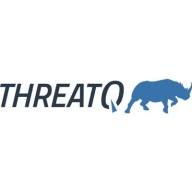

Tines and ThreatQ are products in the cybersecurity landscape, each offering unique attributes. Tines seems to have the upper hand in automation capabilities and deployment efficiency.
Features: Tines provides powerful automation abilities, allowing extensive customization through a no-code interface. It simplifies automation of repetitive tasks, enhancing operational efficiency. ThreatQ offers threat intelligence aggregation, analysis tools, and integration with existing security workflows, providing a comprehensive picture of threats.
Ease of Deployment and Customer Service: Tines has a cloud-based model known for quick setup and ease of use, supported by responsive customer service. ThreatQ offers flexible options including on-premises and cloud solutions, but with a more complex setup. It provides dedicated guidance throughout implementation and operation.
Pricing and ROI: ThreatQ generally presents a higher initial setup cost due to its comprehensive solution but yields significant ROI through enhanced intelligence operations. Tines offers competitive pricing, focusing on delivering high ROI through automation and efficiency improvements.

ThreatQ is a versatile threat intelligence platform designed for effective aggregation, analysis, and management of threat data. It streamlines threat information from multiple sources to enhance understanding and response capabilities.
ThreatQ supports incident response by correlating indicators of compromise and centralizing threat data in a single repository. This platform improves decision-making with its comprehensive threat landscape view and collaborative features. Its detailed analytics, customizable workflows, and scalability offer robust support for security teams. ThreatQ's integration with existing tools and powerful automation capabilities streamline threat detection and response processes. While some users point out the need for better integration and data visualization, ThreatQ remains a preferred choice for many due to its threat prioritization and reporting features.
What are the key features of ThreatQ?ThreatQ is implemented across various industries, providing valuable threat intelligence management in sectors like finance, healthcare, and government. These industries benefit from its incident response support, detailed analytics, and ability to centralize and prioritize significant threats, improving overall security posture.
Tines automates manual security tasks, incident response workflows, and tool orchestration, enhancing efficiency by reducing repetitive processes and improving response times.
Users leverage Tines to automate complex security and incident response operations, integrating seamlessly with other platforms to streamline tasks. Its no-code automation capabilities and strong security features are particularly valued. While it enhances operational efficiency, users suggest improvements in customer support, documentation, and additional integration capabilities to overcome learning curve challenges. Some mention occasional latency issues and seek more customization, training resources, and clearer pricing structures. Enhanced scalability and detailed error logs are desired for smoother troubleshooting.
What are Tines' most important features?
What benefits and ROI should users look for?
In specific industries, Tines is implemented to automate security operations in sectors like finance, healthcare, and technology, where rapid incident response and integration with other platforms are crucial. Automating complex workflows without code is particularly beneficial in these fast-paced environments.
We monitor all Security Orchestration Automation and Response (SOAR) reviews to prevent fraudulent reviews and keep review quality high. We do not post reviews by company employees or direct competitors. We validate each review for authenticity via cross-reference with LinkedIn, and personal follow-up with the reviewer when necessary.